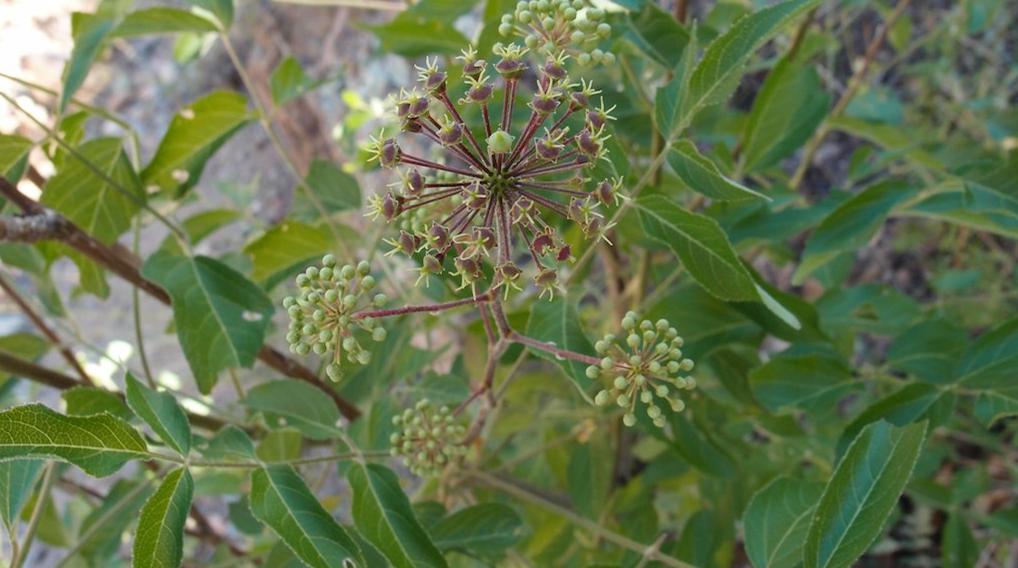|
|
|
|
Family: Araliaceae
Arizona spikenard
|
Shreve and Wiggins, 1964, Kearny and Peebles 1960 Duration: Perennial Nativity: Native Lifeform: Shrub General: Shrub, 2-3 m tall, with thick corky bark; young twigs finely striate, finely short-puberulent with curled or crisped hairs Leaves: Alternate or opposite, on slender puberulent petioles, 5-12 cm long; blades pinnately compound with 5-11 (usually 7) leaflets, these ovate, 3-9 cm long by 1-5 cm wide, with acute to acuminate tips, rounded to obtuse bases, and serrate margins, the marginal teeth gland-tipped; leaflet surfaces finely puberulent, especially beneath. Flowers: White, in terminal umbels, these on peduncles 2-10 cm long; pedicels slender, glabrous, 1-2 cm long; flowers 5-merous; sepals deltoid; petals greenish-white, 2 mm long, with inflexed tips. Fruits: Berries ellipsoidal to subglobose, 5 mm long, 5-seeded, ripening dark red to black. Ecology: Found on shaded hillsides and in canyons, from 3,500-5,000 ft (1067-1524 m); flowers July-October. Distribution: s AZ and n MEX (Sonora south to Oaxaca). Notes: Kearny and Peebles describe this species (under the name A. humilis) as a shrub usually under 2.5 m tall but occasionally reaching 3 m, and having a diameter of 5 cm at the base. Shreve and Wiggins describe the species (under the synonym A. pubescens) as a shrub or small tree, usually 3-6 m tall. Otherwise the two descriptions match. Look for pinnately compound leaves, the leaflets with serrate margins and each tooth tipped with a yellow gland; umbels of white flowers extending above the foliage, these maturing to deep red colored berries. A. racemosa is more widespread in Arizona and New Mexico and can be distinguished by the fact that it is a 1-2 m tall herb (not shrubby or treelike); the leaflets are wider and rounder, with cordate (slightly heart-shaped) bases and marginal teeth that are not gland-tipped; and its elevation range is generally above 5,000 ft. Ethnobotany: Unknown; however, other species in the genus have uses. Etymology: Aralia is a latinization of an old French-Canadian or American-Indian name Aralie; humilis means lowest, or small. Synonyms: Aralia pubescens Editor: AHazelton 2015 |
|
|
|


